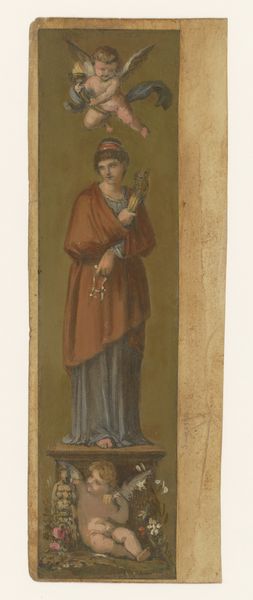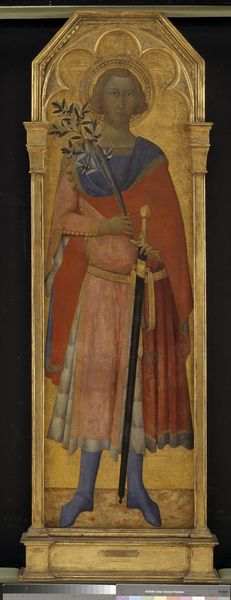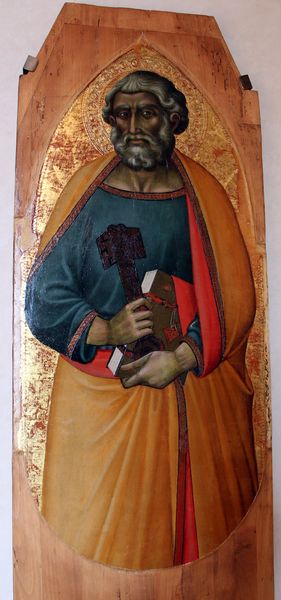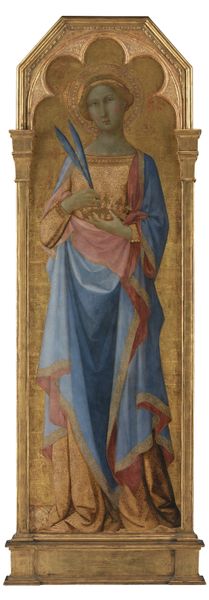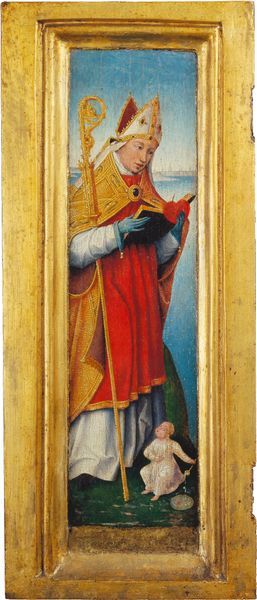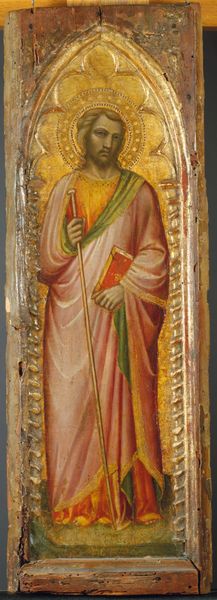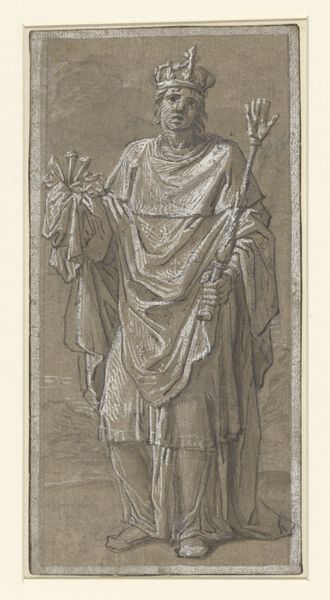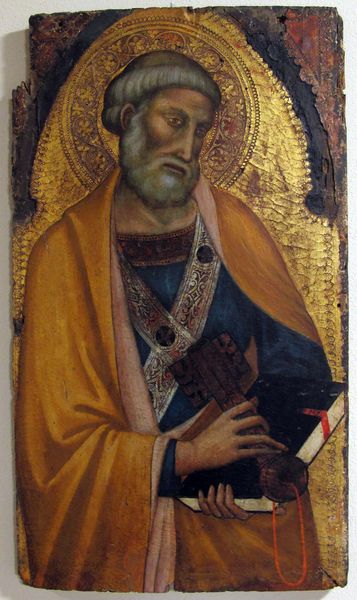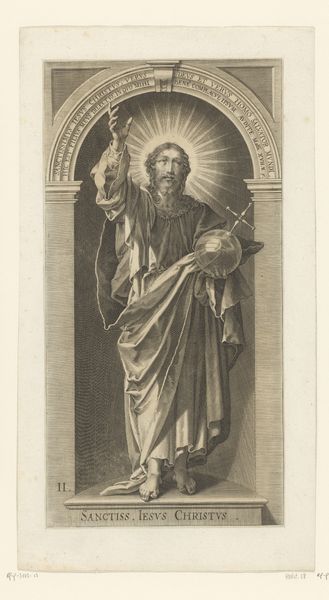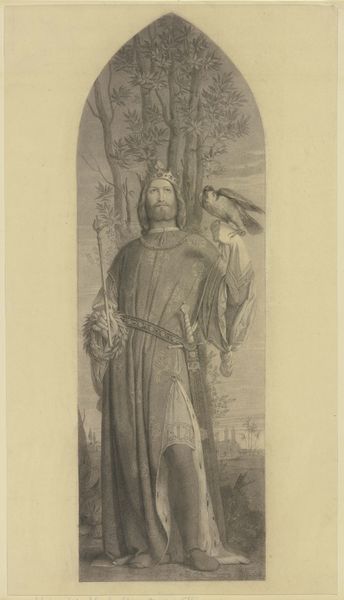
drawing, tempera, painting, print
#
portrait
#
drawing
#
tempera
#
painting
# print
#
history-painting
#
academic-art
Dimensions: 13 7/16 x 5 5/8 in. (34.2 x 14.3cm)
Copyright: Public Domain
Curator: Looking at this image, I am struck by the tension in its composition. The verticality of the arch juxtaposed against Joshua’s reaching arm and determined gaze gives me a sense of upward struggle and faith. Editor: Indeed. This tempera painting, "Joshua, with the Sun at Upper Left," by Hippolyte Flandrin, painted between 1856 and 1863, captures a pivotal biblical moment with remarkable dramatic intensity, showcasing Academic art's approach to historical narrative. Curator: I agree that its historical value is paramount. Note the bare feet, the almost classical drapery and body armour, along with the halo of light - how it fuses pagan and religious symbols in a complex visual message for its contemporary audience. Flandrin seems interested in depicting not just a military leader, but a figure of divine will operating in the theater of war. Editor: Precisely! The details matter immensely in reading the social context. The arched frame reminds me of a reliquary and lends the piece a sense of sacred history. These types of works during this period served as visual reminders of national values couched within religious iconography, thus endorsing moral virtue and patriotic zeal. Curator: Looking closer at the rendering of light itself, I appreciate how it spotlights Joshua’s gesture. And this draws attention to his divine power over nature. The gaze is especially piercing and intense. The contrast creates an ethereal, visionary experience in rendering form, which invites the audience to ponder the weight and miracle of such power. Editor: It’s interesting how you note the play of light because Flandrin studied in Rome. He then gained notoriety painting religious murals in churches such as Saint-Germain-des-Prés, a work often steeped in allegories. Considering the place of worship, one could propose the intent was to embolden faith through linking politics to religious themes. Curator: Exactly, understanding the climate, political or social allows you to unravel such a complete representation! To sum up my viewpoint, the tension, the light, the subject creates a perfect heroic visual which provides insight into a larger discourse of its time. Editor: Indeed, our contrasting perspectives offer complementary layers in interpreting "Joshua." My analytical approach helped contextualize the piece while yours brought its visual architecture to life.
Comments
No comments
Be the first to comment and join the conversation on the ultimate creative platform.

